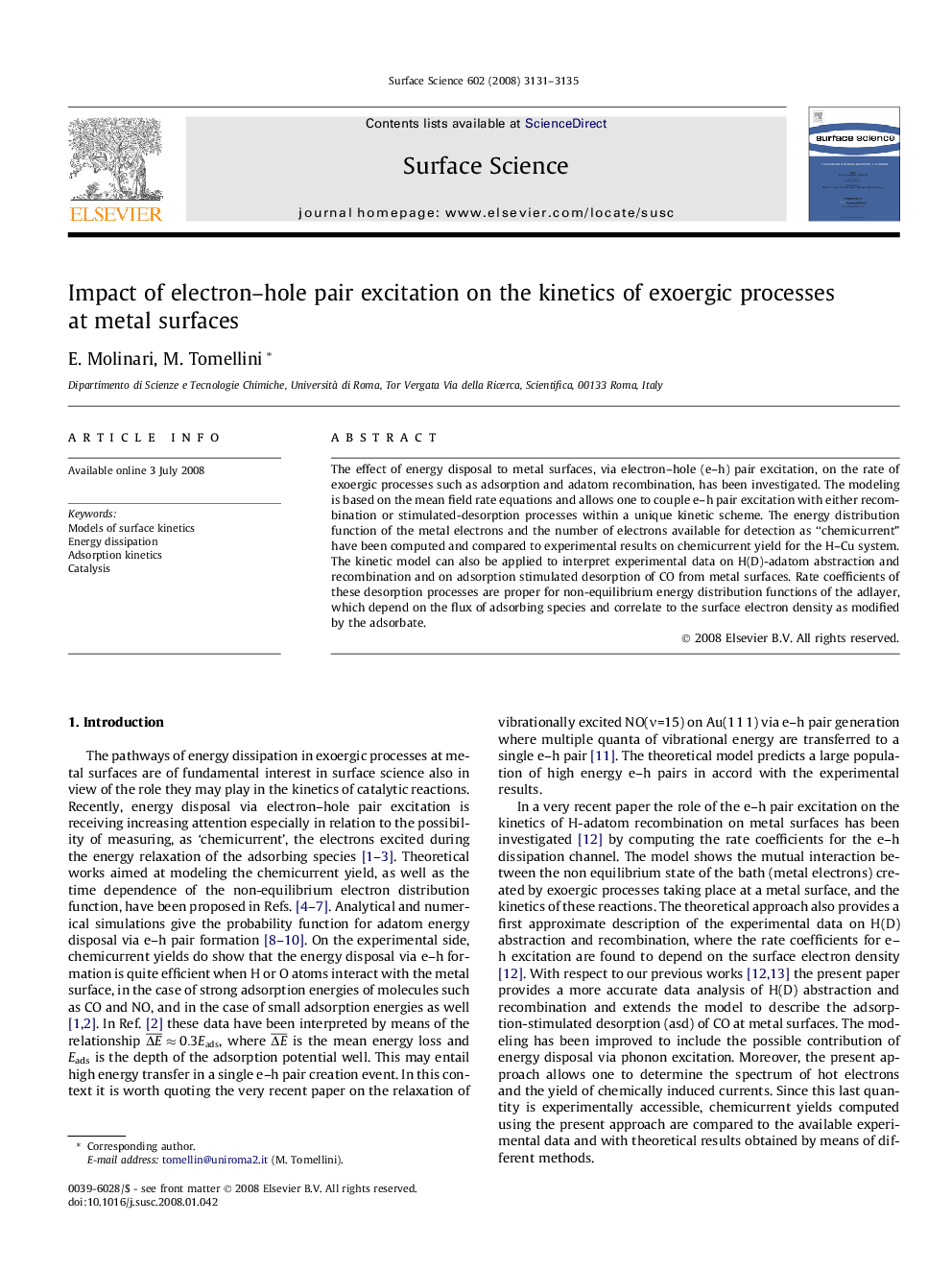| Article ID | Journal | Published Year | Pages | File Type |
|---|---|---|---|---|
| 5424411 | Surface Science | 2008 | 5 Pages |
Abstract
The effect of energy disposal to metal surfaces, via electron-hole (e-h) pair excitation, on the rate of exoergic processes such as adsorption and adatom recombination, has been investigated. The modeling is based on the mean field rate equations and allows one to couple e-h pair excitation with either recombination or stimulated-desorption processes within a unique kinetic scheme. The energy distribution function of the metal electrons and the number of electrons available for detection as “chemicurrent” have been computed and compared to experimental results on chemicurrent yield for the H-Cu system. The kinetic model can also be applied to interpret experimental data on H(D)-adatom abstraction and recombination and on adsorption stimulated desorption of CO from metal surfaces. Rate coefficients of these desorption processes are proper for non-equilibrium energy distribution functions of the adlayer, which depend on the flux of adsorbing species and correlate to the surface electron density as modified by the adsorbate.
Related Topics
Physical Sciences and Engineering
Chemistry
Physical and Theoretical Chemistry
Authors
E. Molinari, M. Tomellini,
